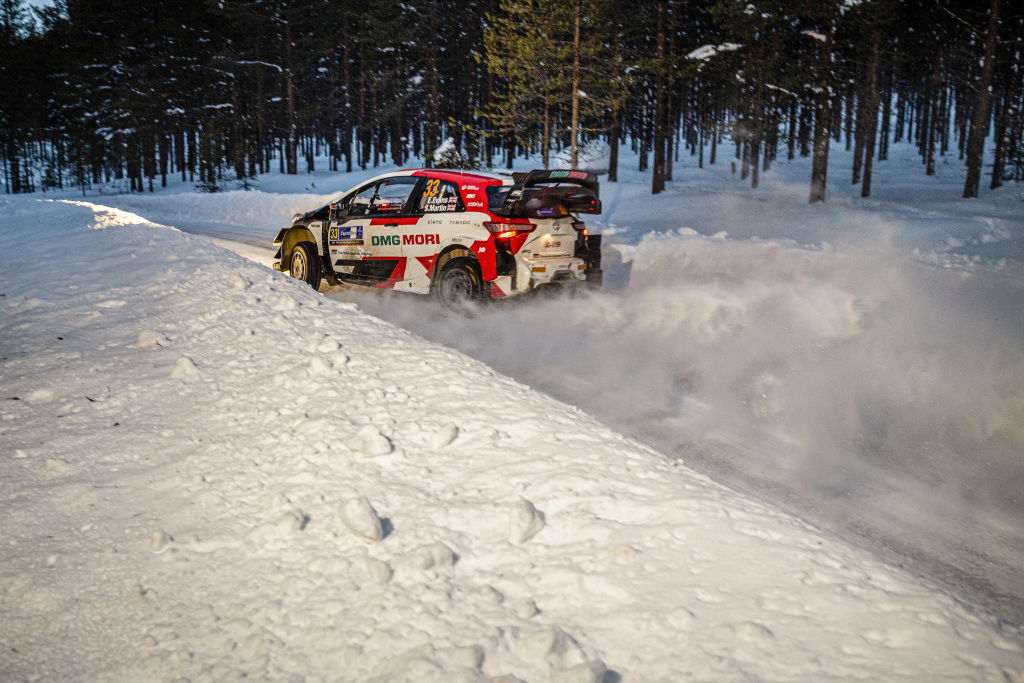For fans of circuit-based motorsport, the world of rallying might seem like a confusing alternate dimension. But the World Rally Championship is nothing to be scared of, and regularly supplies some of the most dynamic racing in the most extraordinary venues.

On the face of it, it’s the most unique motorsport in the world. Drivers race the clock rather than each other in the most exotic locations, day and night, with a co-driver directing them the entire time.
It might take some getting used to, but the World Rally Championship provides hair-raising racing action. And fans who attend the races get an adrenaline rush of their own, getting closer to the action than at any traditional racing circuit.
If rallying seems like a daunting prospect, don’t worry. This guide will break everything down from what cars you’ll see racing, what a co-driver does, and where on the globe the World Rally Championship takes place.
World Rally Championship for Beginners
What cars race in the World Rally Championship?
There are four teams in the WRC: Hyundai Shell Mobis, M-Sport Ford and Toyota Gazoo Racing Each team features multiple driver partnerships, and so has more than one opportunity at victory.
Three cars compete across the four teams. They are each based on road cars you drive past on the motorway every day. Hyundai drive Hyundai i20s, the M-Sport Ford team races a Ford Puma Rally, and Toyota Gazoo races the Toyota Yaris.
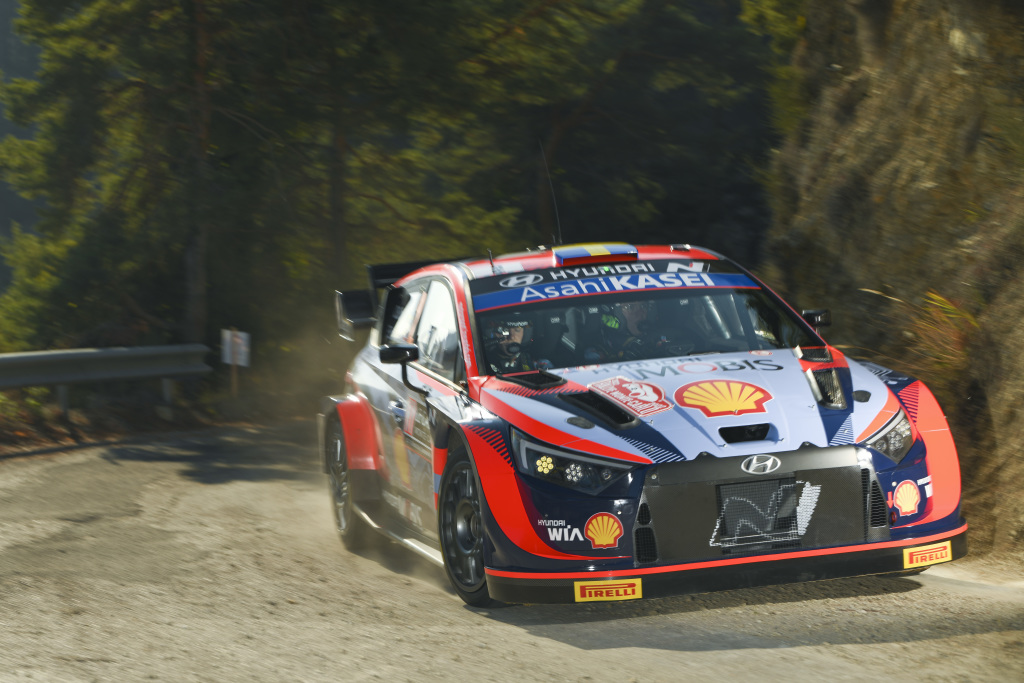
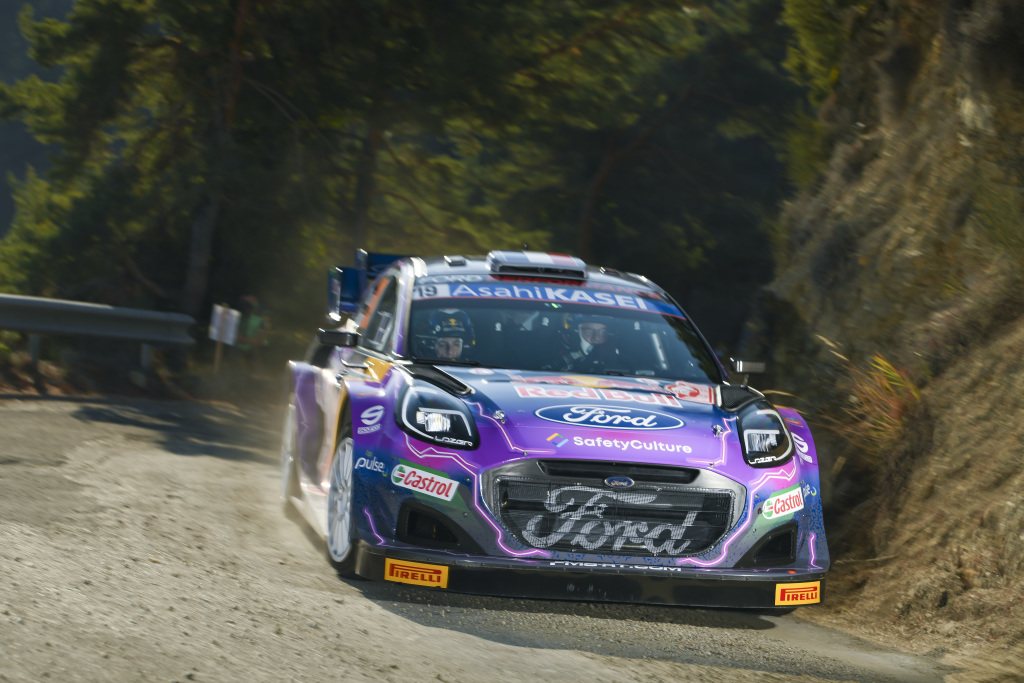
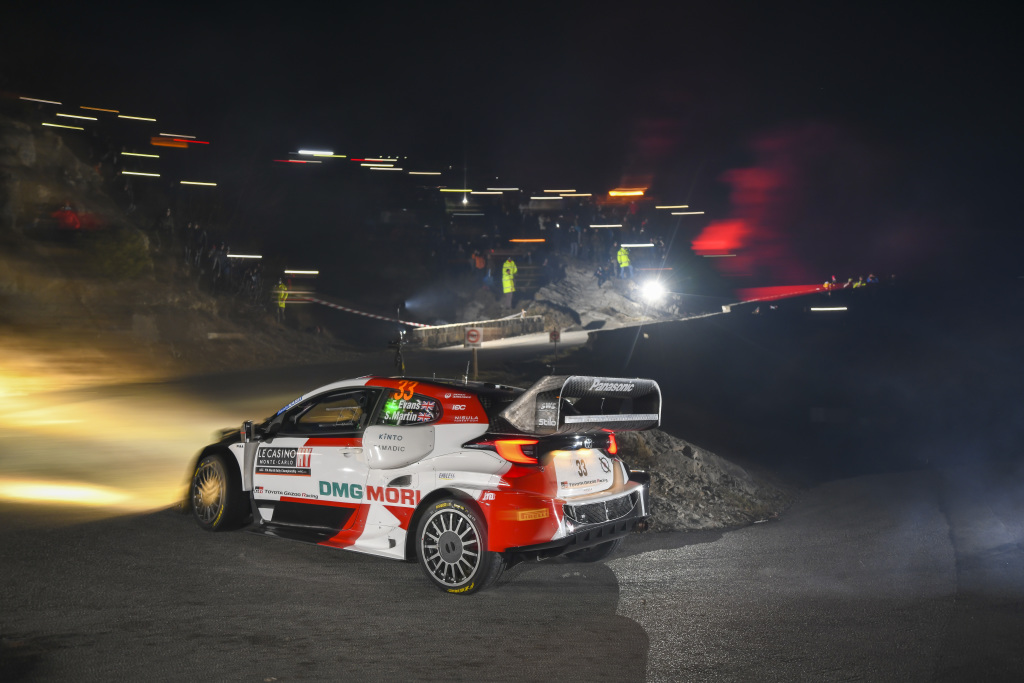
However, every car is set up for the extreme conditions rally drivers face. They are also souped-up to rally specification: 380 horsepower, six-speed gearbox, four-wheel drive, with the cars maintaining a minimum weight of 1,190kg.
To put this into context, a road Toyota Yaris will have a max horsepower of 106hp.
In 2022, for the first time, hybrid drivetrains will be fitted to the 1.6L turbocharged engines. The cars must use these electric motors to power the car between stages and at the service park. The drivers will be permitted to deploy some electrical energy during stages, with the FIA deciding how much can be used in racing conditions for each stage.
The cars will also be fitted with bespoke aerodynamic packages including rear wings, diffusers and spoilers to ensure max speed and control for the drivers.
Where does the World Rally Championship race?
World Rally Championship’s biggest selling point is its variety. During a standard year, the series races in 12 countries across five continents. Each rally presents different challenges to the drivers, from terrain to weather.
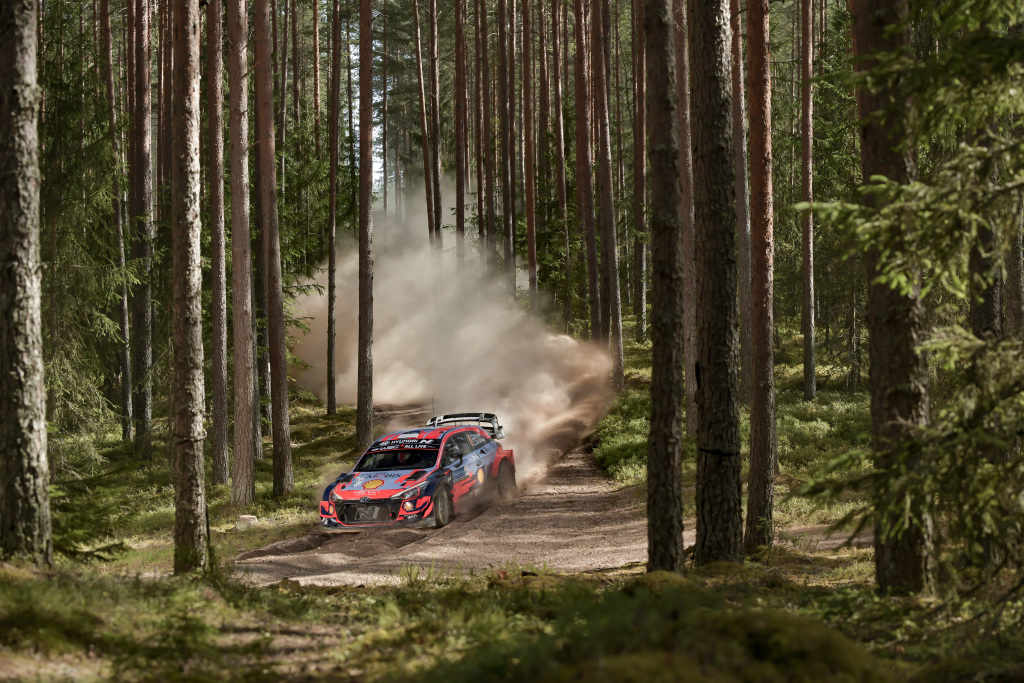
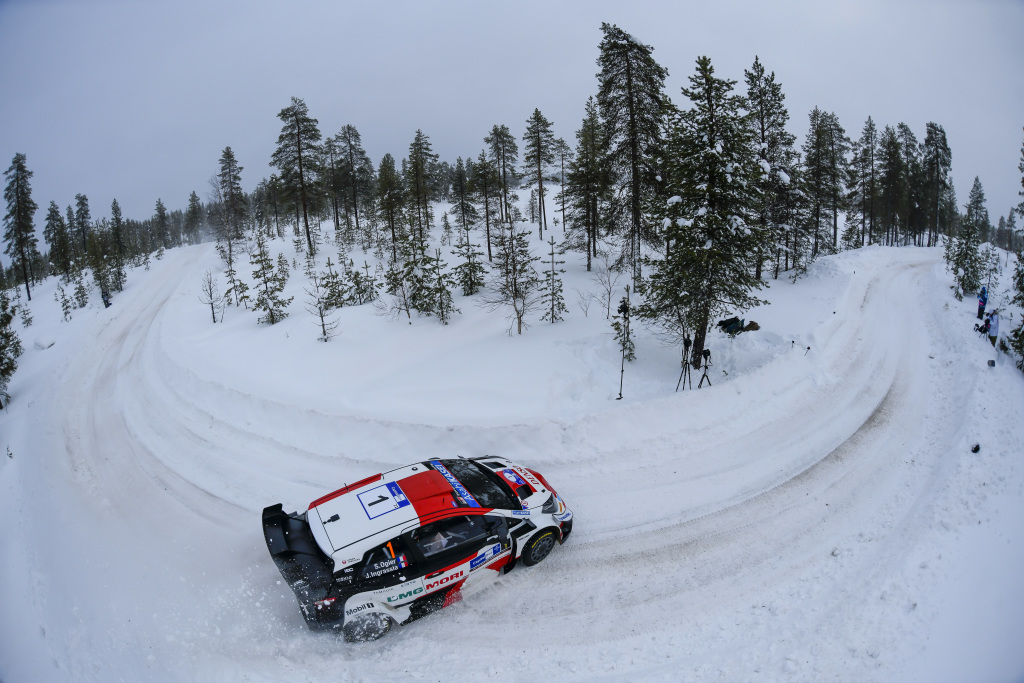
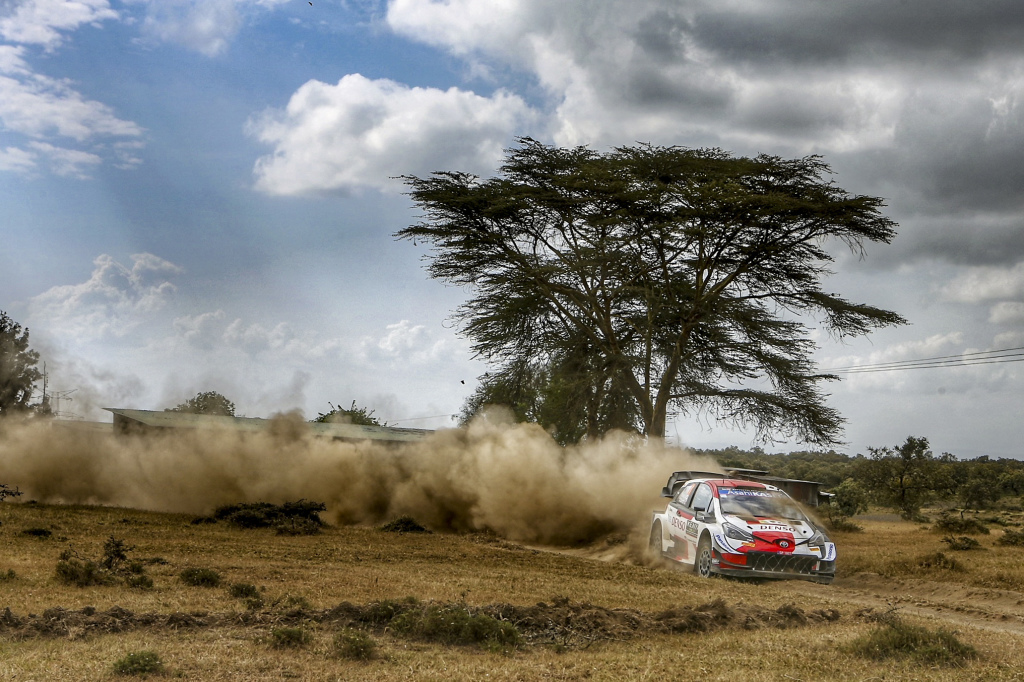
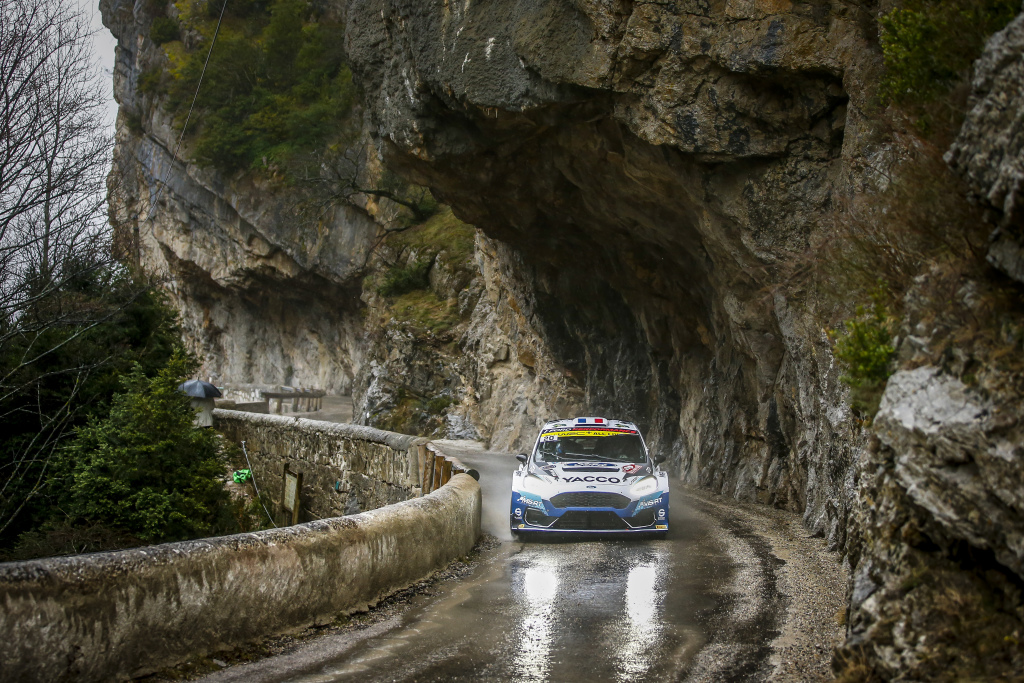
For instance, Rallye Automobile Monte Carlo takes place on the public tarmac roads around Monaco. While we’re used to the blistering sun for the Monaco Grand Prix in the summer, the rally stages take place in the Alps in January, so drivers will contend with mud and snow.
Many of the stages take place on dirt tracks. Rally Estonia takes in the stunning forests and lakes in the beautiful northern European country. The Ypres Rally in Belgium also sees the cars speed through picturesque dirt roads, some splitting famous vineyards before the final leg takes on the legendary Spa-Francorchamps circuit.
But some of WRC’s races are the most unique motorsport events on the planet. Rally Kenya might well be the toughest rally stage in the world. Its dusty desert tracks take the cars through safari-style routes along the Kenyan plains.
At the other end of the spectrum, the drivers are forced to deal with Finland’s icy forests, with some stages behind held in the dark frosty evenings through the forest. Finland hosts two rallies, an Arctic Rally in Lapland, and a drier race in Central Finland.
Each country brings its own character. Croatia, Portugal, Italy, Argentina, Chile, Sweden, Greece and the UK all host races in the Championship.
| Round | Dates | Rally | Service Park | Surface | Stages |
|---|---|---|---|---|---|
| 1 | 20/01/2022 – 23/01/2022 | WRC Rallye Monte-Carlo | Gap, Provence-Alpes-Côte d’Azur | Mixed | 17 |
| 2 | 24/02/2022 – 27/02/2022 | WRC Rally Sweden | Umeå, Västerbotten County | Snow | 19 |
| 3 | 21/04/2022 – 24/04/2022 | WRC Croatia Rally | Zagreb, City of Zagreb Region | Tarmac | 20 |
| 4 | 19/05/2022 – 22/05/2022 | WRC Rally de Portugal | Matosinhos, Porto | Gravel | 22 |
| 5 | 02/06/2022 – 05/06/2022 | WRC Rally Italia Sardegna | Alghero, Sardinia | Gravel | 21 |
| 6 | 23/06/2022 – 26/06/2022 | WRC Safari Rally Kenya | Nairobi, Nairobi County | Gravel | 19 |
| 7 | 14/07/2022 – 17/07/2022 | WRC Rally Estonia | Tartu, Tartu County | Gravel | – |
| 8 | 04/08/2022 – 07/08/2022 | WRC Rally Finland | Jyväskylä, Central Finland | Gravel | – |
| 9 | 18/08/2022 – 21/08/2022 | Ypres Rally Belgium | Ypres, West Flanders | Tarmac | – |
| 10 | 08/09/2022 – 11/09/2022 | WRC Acropolis Rally Greece | Lamia, Central Greece | Gravel | – |
| 11 | 29/09/2022 – 02/10/2022 | WRC Rally New Zealand | Auckland, Te Ika-a-Māui | Gravel | – |
| 12 | 20/10/2021 – 23/10/2021 | WRC Rally de Espana | Salou, Catalonia | Tarmac | – |
| 13 | 10/11/2021 – 13/01/2021 | WRC Rally Japan | Nagoya, Chūbu | Tarmac | – |
What is a stage?
When the World Rally Championship rolls into town, it sets up multiple routes in the local area. These can vary anywhere from 3km to 35km in length, and each car will take on each route at least twice in different ‘stages’.
A stage is a single against the clock time trial which every team runs throughout the weekend. They may run each route twice in a single day, which makes up a ‘leg’, before moving onto the next ‘leg’ of different routes the next day.
If you’re in the local area on race weekend, you could see the cars passing through your local town, as the drivers navigate from one route to the next alongside other cars on the road.
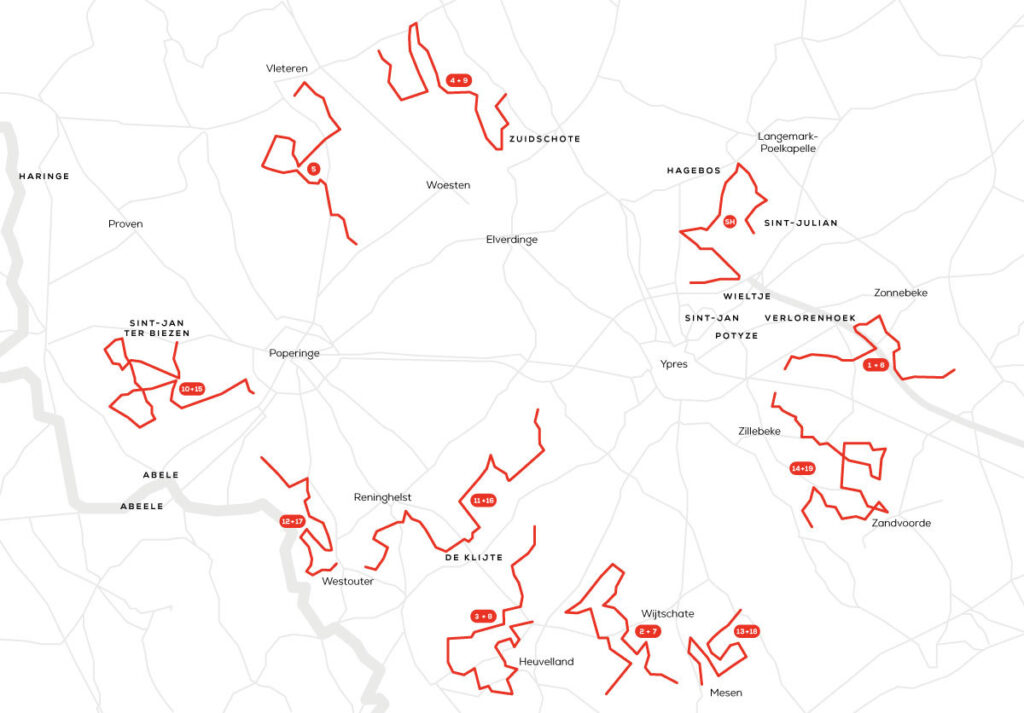
How is the winner of a rally decided?
At the end of each stage, the drivers’ times are recorded. Each time is added to that of the previous stage, so at the end of the weekend, every car has a cumulative time.
Penalties will be added along the way. Drivers can be penalised for cutting corners, making certain repairs, or even arriving late or early for the next stage.
Once all the times and penalties are added, a winner is declared. 25 points are awarded to the car that wins the event, with 18 for 2nd, 15 for 3rd, 12 for 4th, all the way down to 1 point for 10th place.
The final stage is usually a ‘Power Stage’. 5 points are awarded to the fastest car in this stage, with 4 points for the 2nd placed car and so on.
What does a co-driver do?
A co-driver is the most important navigation system in all of motoring. Unlike racing circuits, where drivers memorise every corner and repeat the turns lap after lap, it’s impossible to memorise every turn of every route in the rally.
But the stakes are much higher than in road racing. One slip on one corner, and your car could be falling wayside down a mountain. Such a fall could leave irreparable damage, not to mention the risk of injury.
So a co-driver sits in the passenger seat, directing the driver throughout the rally. The co-driver takes notes on each stage and will tell the driver the direction of the corner, the severity of the corner, and any straightaways between turns.
These instructions need to be clear, concise and accurate, so the driver can prepare the speed of the car and find the right gears. If it goes wrong, the car could end up flying off the course.
The co-driver reads from pace notes, which are made before the stage and are a rally driver’s Holy Bible. These have complete detailed information from the incline of the course, any jumps they might have to tackle, and in-depth cornering instruction.
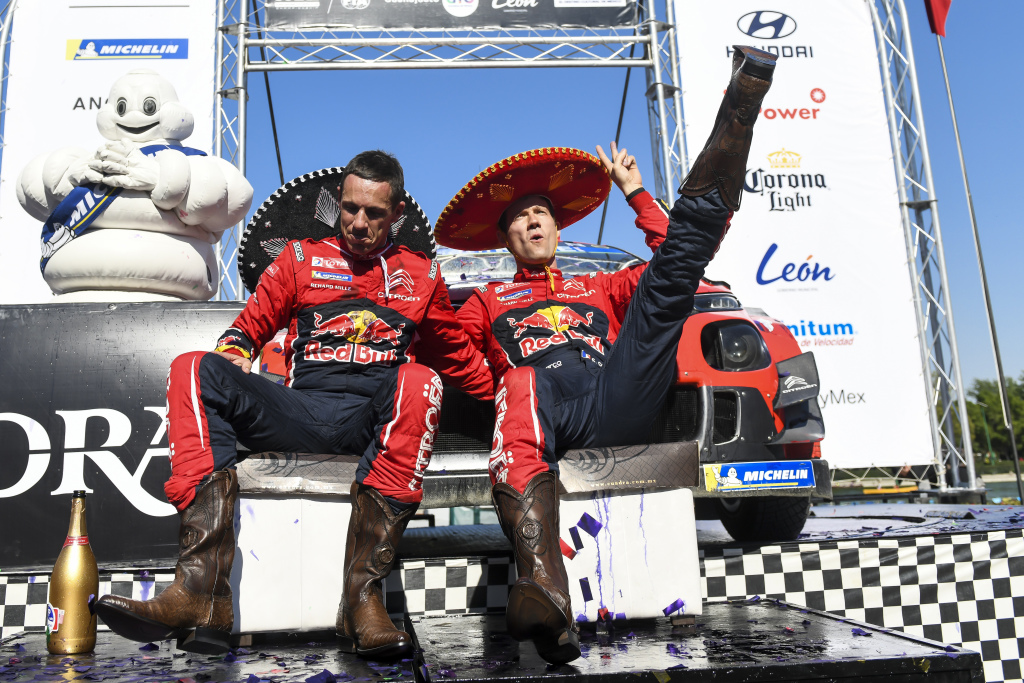
What happens if a rally car needs repairs?
During a rallying event, each team sets up a mobile garage in a central position. The cars return here for service throughout the day, and the car can be worked on overnight.
However, sometimes repairs need to be undertaken on the road. Each car will be equipped with at least one spare tyre, which the driver and co-driver will fit between stages should the car suffer a puncture.
But often, more complex repairs could be required out on the road. This mechanical and engineering knowledge is what makes rallying teams some of the most experienced and impressive drivers in the world of racing.
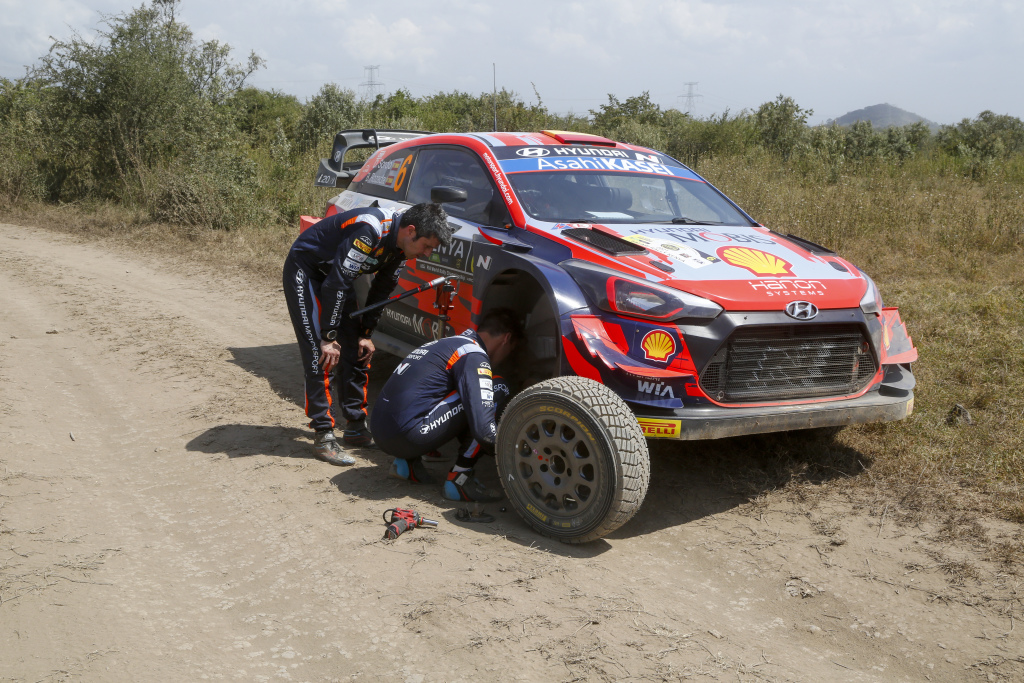
Copyright: Motorsport Images.
How many series are there?
Like Formula 1 has the F2 and F3 support series (like MotoGP’s Moto2 and Moto3), WRC also runs two support series.
WRC2 and WRC3 also run production cars, like the main WRC series, but these cars are modified to a different specification. There are more teams and drivers in WRC2, with a few more cars being used too: Volkswagen Polo, Skoda Fabia and Citroen C3 are being used in 2021.
The WRC2 and WRC3 championships run the same stages on the same dates as the main event. Spectators booking tickets to the WRC will see the support series in action alongside the main series cars.
Can fans attend rallying events?
Yes! Thankfully, fans can attend events on the World Rally Championship calendar, and get up close and personal with the machines. It’s not an unfamiliar sight to see spectators lining the course at what might seem like a dangerous distance.
Tickets can be booked that guarantee you entry to certain stages at an event. You will attend one stage, before following the rally to the next stage. This is often a walk or short drive away and makes for an exciting adventure as you follow the pack on the road. There are also hospitality packages available, which grant you access to a lounge where you can meet fellow WRC fans.
For a complete package, Motorsport Tickets offer hotel and travel packages. These range from three-star hotels and coach transfers to stages, to premium five-star hotels with helicopter transfers and expert guides, plus lunch with an official WRC team. To find out which races are available, visit our WRC page.
